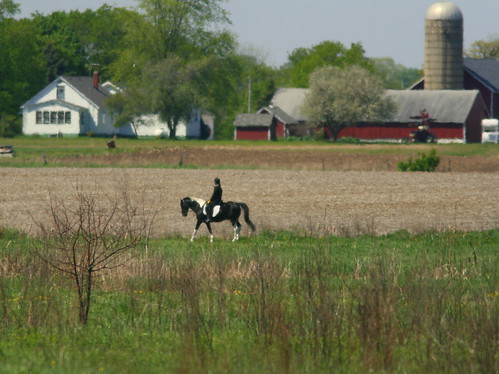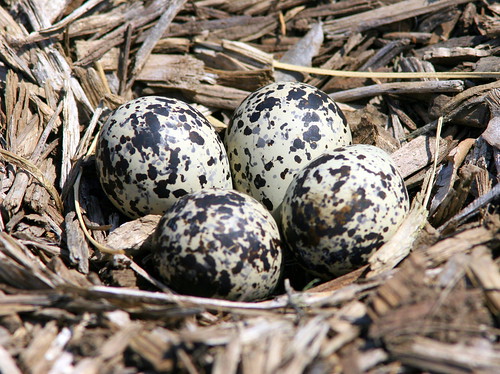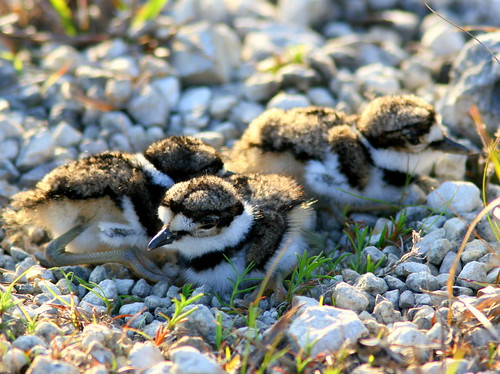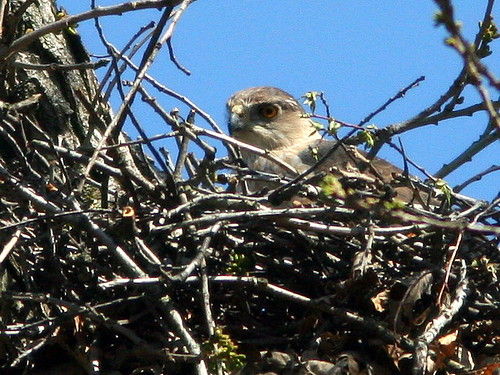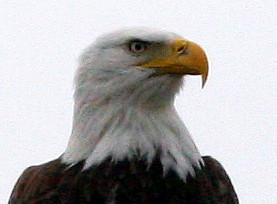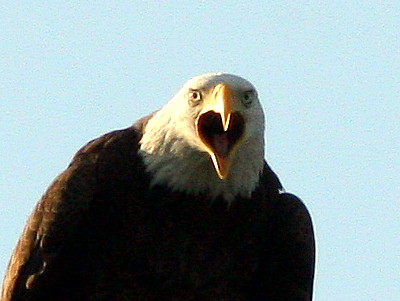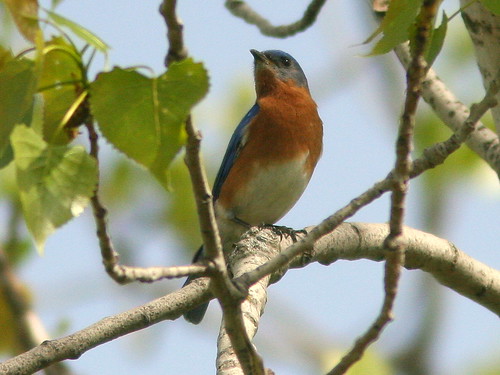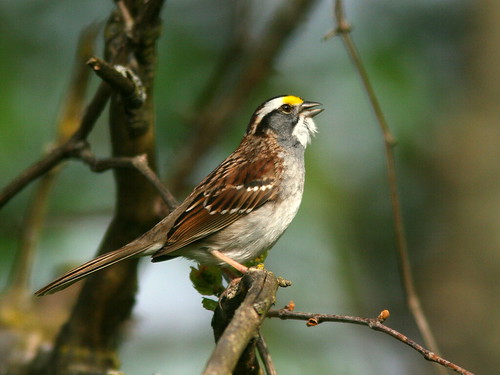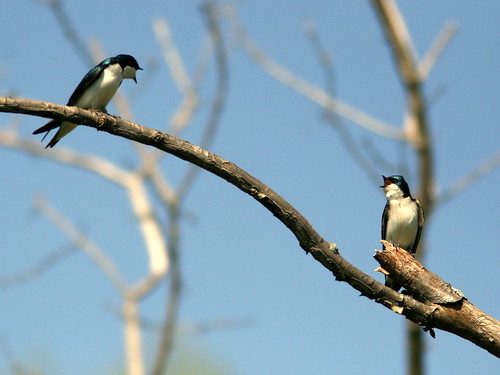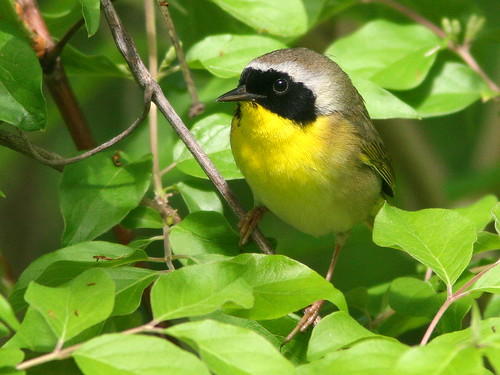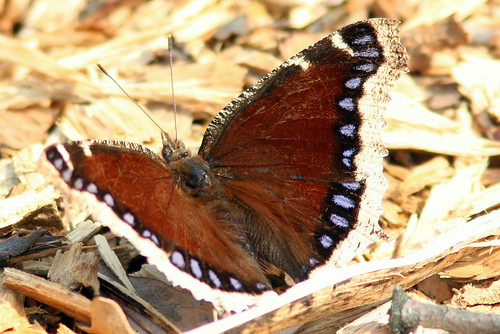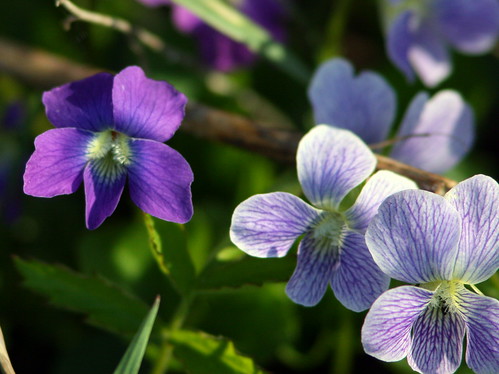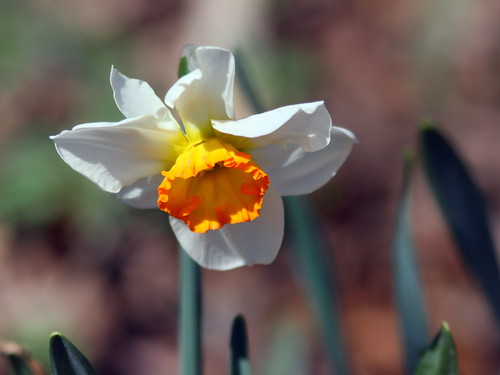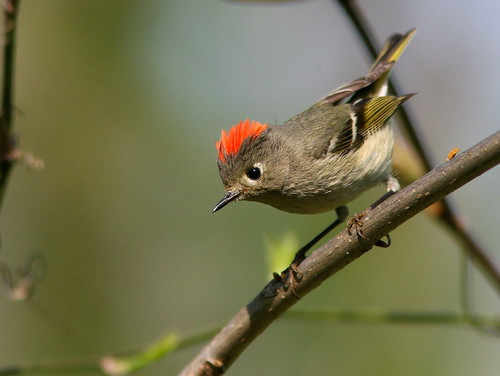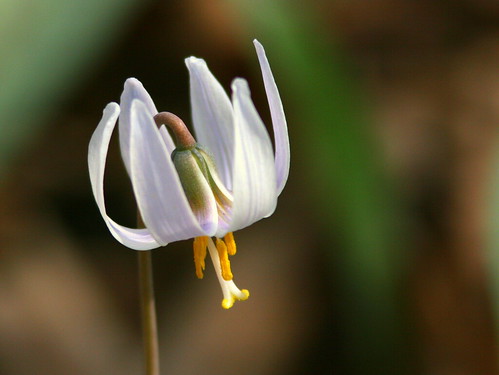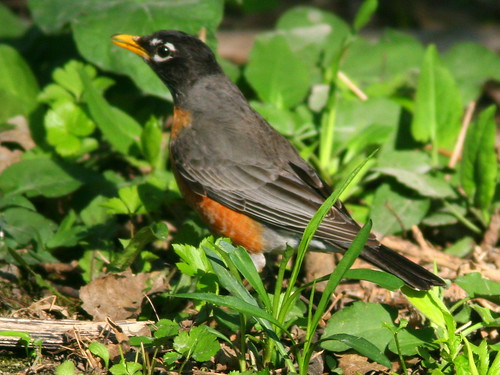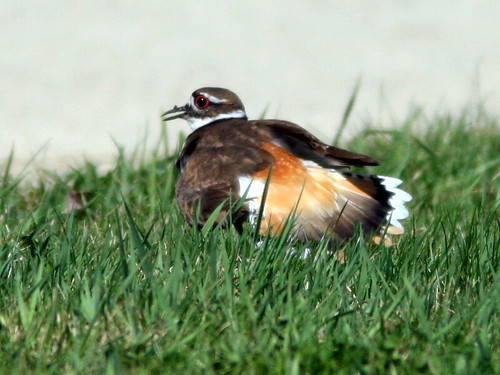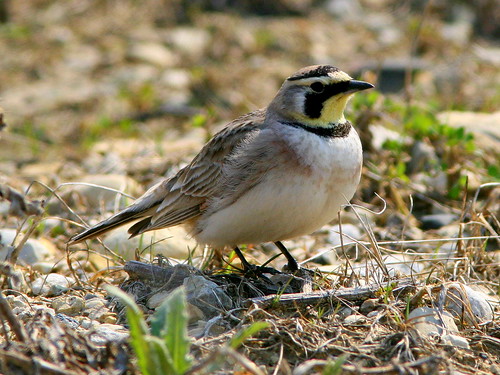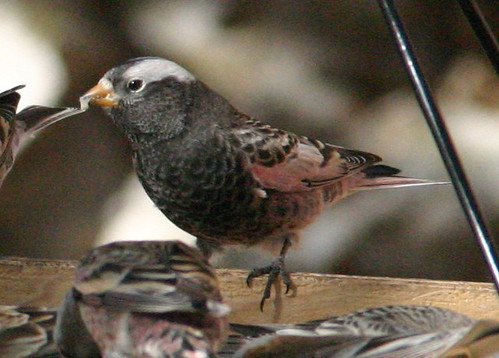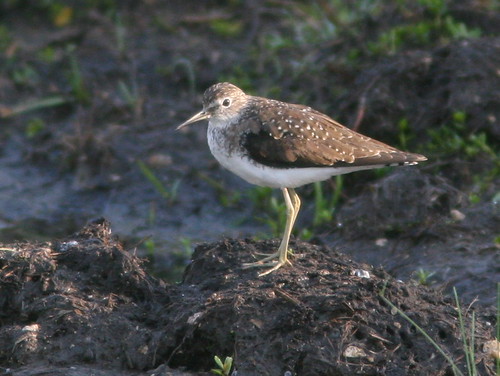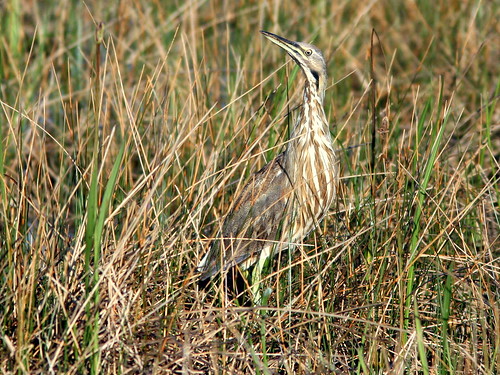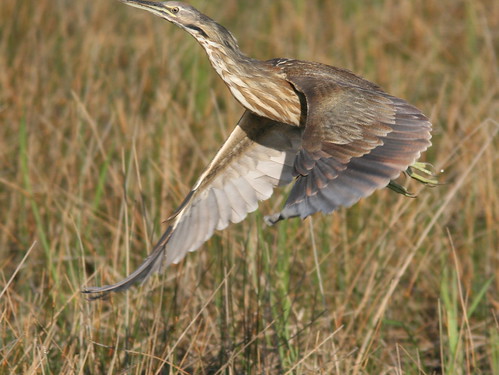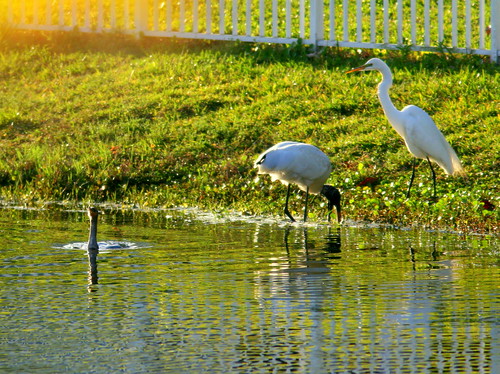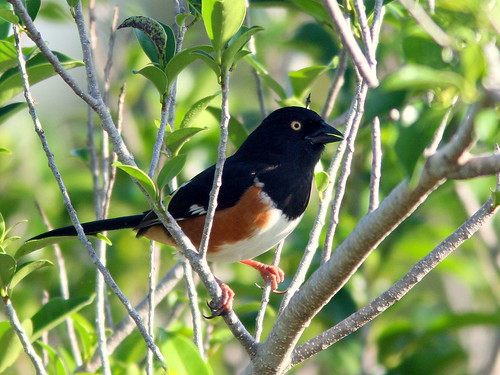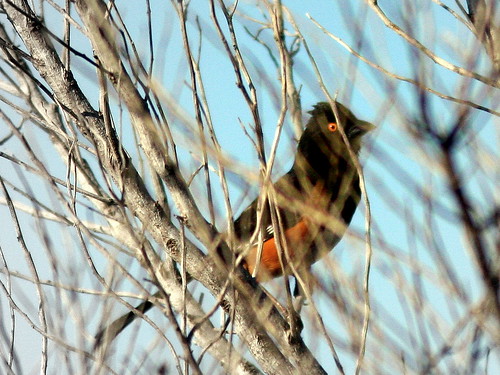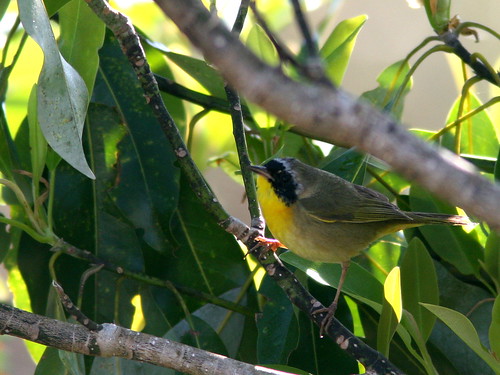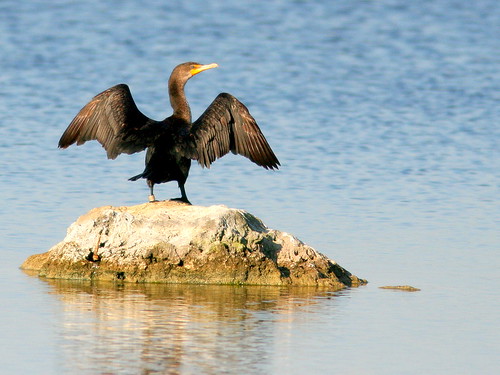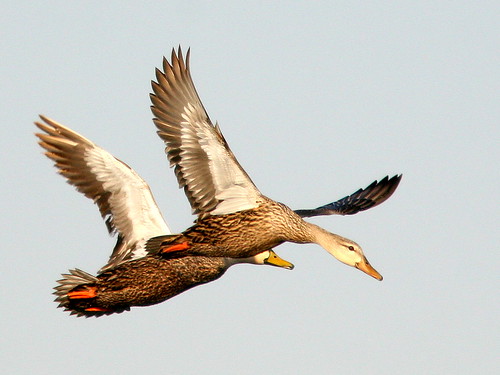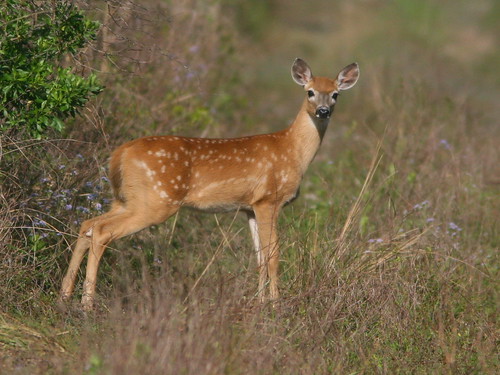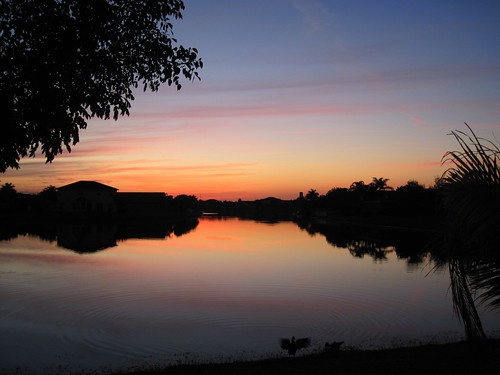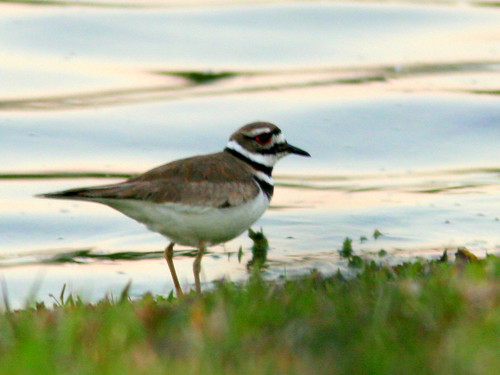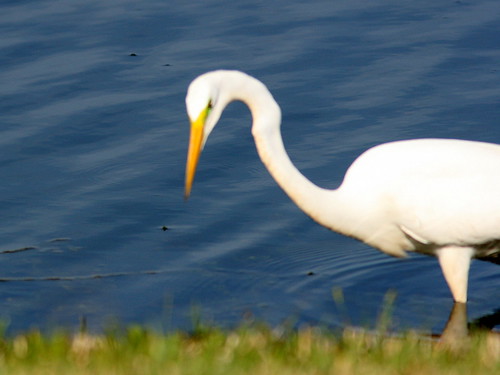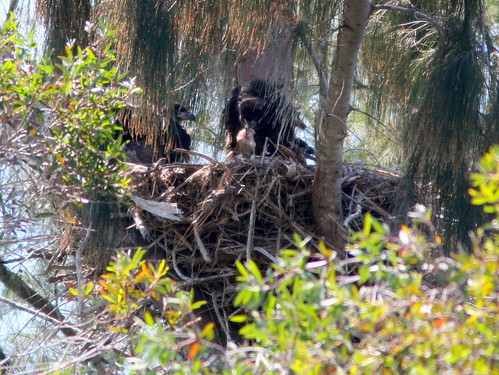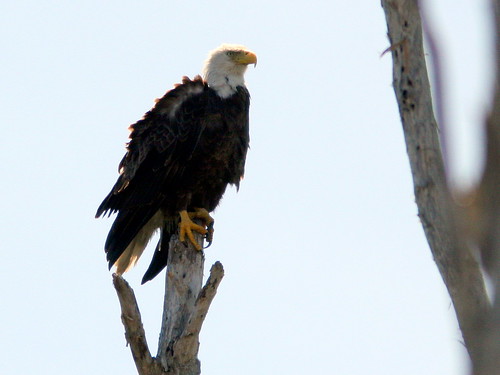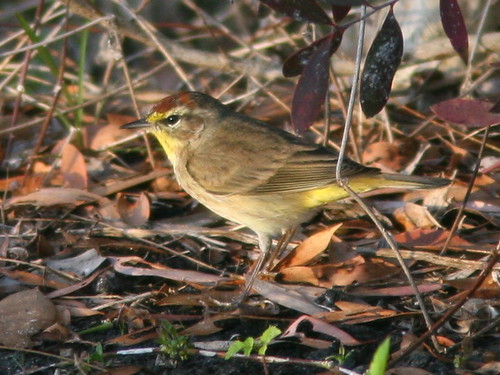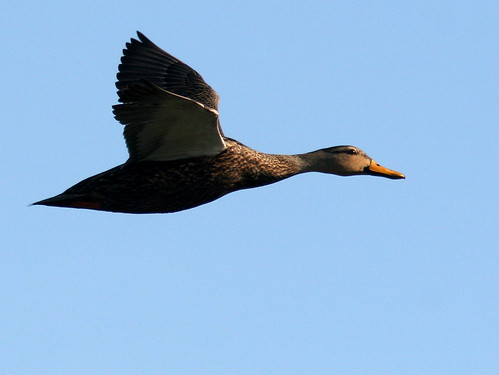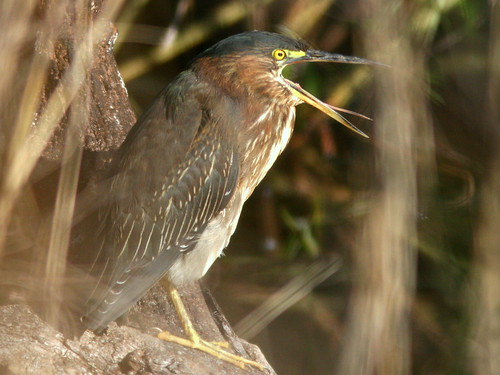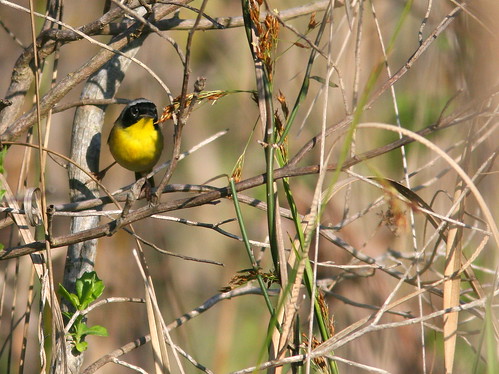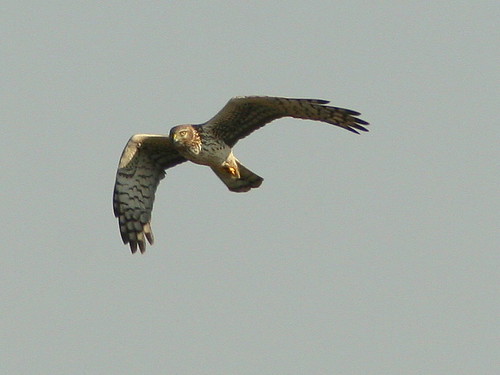Posted by: Ken @ 1:51 pm
The recently burnt field in the foreground, at Nelson Lake/Dick Young Forest Preserve in Kane County, Illinois, will soon harbor the nests of Savannah Sparrows and Sedge Wrens:
As a child of about 10, I often tried to locate active birds’ nests. This could be difficult, and it took patience and some careful behavioral observation. If I saw a bird gathering nesting materials or food, I would try to follow it to the nest site. Another clue was that birds with nestlings often carried white fecal sacs away from the nest after feeding the young, discarding them some distance away to keep the nest clean and also deter predators. I took photos of many nests with a liitle Kodak Brownie box camera, and hurried to get the film developed. I was almost always too close and they were out of focus:
Some nests were relatively easy to find. If I came across a Killdeer that tried to distract me and lead me away by calling and feigning injury, I knew its nest was nearby. I would simply walk directly opposite from the way that the Killdeer wanted me to go. The bird would become more frantic the nearer I approached the nest or its chicks. Since both eggs and young are so well camouflaged, I stepped very carefully so as not to crush them underfoot. Now I know that it is generally not a good idea to approach the nest of any bird, as this causes them great anxiety. You also may attract predators to the site.
Recently, this Killdeer ran across the path when I was walking the dog in nearby Hawk’s Bluff Park, in Batavia, IL:
It then showed me its bright orange rump and tail feathers as it fluttered on the ground, all the time calling “dee-dee-dee…” to attract my attention: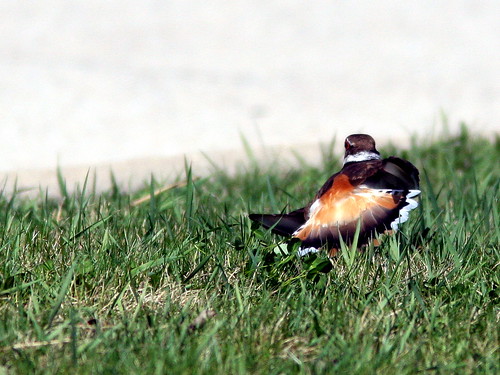
I did not try to pinpoint this nest, but I assume it was very close to where it was last year:
In Florida, using the same technique of “reverse logic,” I found these Killdeer chicks on the shoulder of a gravel road:
In contrast to the distraction display of the Killdeer, some birds defend their nest aggressively. In an earlier blog (The Goshawk and the Bear), I recalled the angry response of a Northern Goshawk when I innocently stood under its nest tree.
Cooper’s Hawks are known for sometimes attacking humans who simply walk under their nests. This one, incubating eggs at Hawk’s Bluff Park (so named for the persistence of nesting hawks in its oak trees) tends to ignore hikers on the trail beneath its nest:
Not far away, a Red-tailed Hawk keeps watch over its young:
Birds are unable to change their facial expressions to show emotion. Some birds of prey, notably eagles, have fierce-looking faces because of the bony ridge that shades their eyes produces a permanent frown. This Bald Eagle is nesting near our Florida home:
While his expression appears to be angry and fierce, this eagle is merely calling to his mate:
The plain face of the Eastern Bluebird conveys a sort of innocence…
...contrasting with the extravagant painted face of the White-throated Sparrow:
The body language of these two Tree Swallows leaves little doubt that they are engaged in a territorial dispute:
The eyes are often the most interesting feature of a photograph, and they must reflect some light in order to stand out. Black faces give me the most trouble, as dark eyes will blend into the plumage if they do not catch the light. Usually, yellowthroats skulk in the darkness of thickets, and their eyes melt into their black masks.
Luckily, this Common Yellowthroat briefly hops into the sunlight, and his eyes sparkle.
I will never forget the angry response of one Brown Thrasher that flew
right in my face. That was the last time I ever ventured near one of
their nests. Even today, the fire in the stare of a thrasher brings back
that childhood memory.
This Brown Thrasher was actually just
foraging when I photographed it, but oh those scary eyes!:
Spring is a sort of non-event in Florida, but it explodes on the scene here in Illinois. During the past two weeks the trees have gone from barren to green. Redbuds and fruit trees bloom profusely. I welcome the earliest wildflowers on the floor of the local woodlands. We try not to miss getting out every day to experience the rapid changes.
Cries of migrating Sandhill Cranes fill the air:
It wouldn’t be spring without Black-capped Chickadees…
…or a groundhog (Woodchuck) just out of its den:
Mourning Cloak butterfly adults survive through winter by hiding in hollow trees, under bark or in brush piles, hibernating in a state of suspended animation known as cryo-preservation. Many do not make it, especially if the winter is too damp and warm, or if their hiding place fails to protect them from fierce wind and predators. They are usually the first butterflies to appear in spring.
This Mourning Cloak’s wings are tattered, probably evidence of the hardships of the severe northern Illinois winter weather:
Some violets are blooming the first week in April…
…as are the Daffodils…
I was lucky to capture the extended firey crest of this Ruby-crowned Kinglet, excited by the presence of another singing male nearby:
The delicate White Trout Lily is one of my favorite early spring flowers:
Back in my my New Jersey childhood days of the 1940s, American Robins were rarely seen before the beginning of March, and were heralded as the first sign of spring. In response to climate change, they, like many other migrants, are spending winter farther north.
This male robin was engaged in a territorial battle with an interloper, while his mate gathered mud at the edge of a puddle:
The Wake Robin (Trillium) also blooms before the middle of April:
Killdeers already have laid their eggs close by last year’s nest site. This one performs a distraction display, writhing as if injured, and flashing its bright orange tail and rump to lure me away from the nest:
The pair of Cooper’s Hawks that I have been observing for the past three years is again nesting in Hawk’s Bluff Park, Batavia:
Near the hawk’s nest, a Hairy Woodpecker (distinguished from the smaller Downy Woodpecker by it longer bill and unbarred outer tail feathers) climbs an old oak:
Sparrows are some of my favorite subjects, maybe because seeing them takes patience rather than a lot of walking. This Song Sparrow sings his heart out:
The demure Field Sparrow, with a plain face and reddish beak, also puts a great deal of effort into its distinctive accelerating trilled whistle:
A Vesper Sparrow was singing on the roof of our condo early in the morning, and flew to a weedy spot near the road. I used the car as a blind to get my best views of this species to date:
While I watched the Vesper Sparrow, a Horned Lark happened by:
 UPDATE: April 13, 2010. The flag has stopped waving. The last flocks of rosy-finches were seen on April 9th. Interestingly, the flocks at Taos Ski Valley disappeared at almost the same time. No stragglers have been reported at either location. The feeder has been taken down, but please report any late sightings. A summary of this past winter’s sightings and banding results may be viewed at this link. Now the hummingbird feeders go up, to be welcomed by Broad-tailed, Black-chinned, Calliope, and later, Rufous Hummingbirds. Check out the many links in rosyfinch.com for more information about great year-round birding in the Sandia Mountains east of Albuquerque, New Mexico. If you have a request for information, or wish to provide a report on your birding trip to the Sandia Mountains, please visit the SANDIA CREST BIRDING FORUM.
UPDATE: April 13, 2010. The flag has stopped waving. The last flocks of rosy-finches were seen on April 9th. Interestingly, the flocks at Taos Ski Valley disappeared at almost the same time. No stragglers have been reported at either location. The feeder has been taken down, but please report any late sightings. A summary of this past winter’s sightings and banding results may be viewed at this link. Now the hummingbird feeders go up, to be welcomed by Broad-tailed, Black-chinned, Calliope, and later, Rufous Hummingbirds. Check out the many links in rosyfinch.com for more information about great year-round birding in the Sandia Mountains east of Albuquerque, New Mexico. If you have a request for information, or wish to provide a report on your birding trip to the Sandia Mountains, please visit the SANDIA CREST BIRDING FORUM.
|
**OTHER BIRD SIGHTINGS**
PINE GROSBEAKS have been seen on November 22, and again on December 14, at the 10K trailhead along road to Sandia Crest, and seen on January 17 (and heard on the 31st) in Kiwanis Meadow just south of the Crest House, along with a pair of AMERICAN THREE-TOED WOODPECKERS |
|
UPDATED
ROSY-FINCH REPORTS
Notes from Feeder Project Coordinators, Fran Lusso and Dave Weaver Date: April 13, 2010
Hi Ken, I went up to the Crest today, where it was clear and very windy with temperatures around 26 - 28 degrees (F). The snow is dissipating quickly, with 1 to 3 feet in shady areas and most of the snow melted away in sunny areas. I have attached a log update that shows the last recorded rosy finch sighting on April 9th. The Crest House staff say that they have not seen any finches since “before the weekend”. I waited over an hour and did not see any. I took down the feeder but left enough seed for the Crest House staff to continue to put seed out for a while longer in hopes of attracting any stragglers. But I think it is likely that the finches are gone. I will go up to the Crest next week to check on things and probably to bring down the project equipment and any remaining seed. Hope all is well! Dave …The Crest House is now serving sub sandwiches to order and still serving the rest of the old menu that does not require the grill, oven or fryer. The staff says that visitors are doing fine with the new menu… Latest From the Rosy-Finch Banding Team
February 28, 2010Hi all, Today was another good day at the Crest House. We only newly banded 2 Brown-capped Rosy-Finches but we recaptured 124 other Rosy-Finches. Seven of these were birds from previous seasons that we had not seen before. One was a Black Rosy-Finch that we originally banded on 5 February 2005. She is now in her 7th year. The road was clear but there is a lot of ice between the parking lot and the Crest House. Nancy & Steve = = = = = VISIT THE BIRDING FORUM in ROSYFINCH.COM
We have added a Sandia Crest Birding community FORUM to the rosyfinch.com Web suite. This feature will permit all who have an interest in rosy-finches and year-round birding in the Sandia Mountains to directly post current observations, banding reports, photos, research updates, requests for information or assistance in planning a visit. We also invite all rosy-finch observers and researchers world-wide to utilize this new means of communication to exchange information. It supplants the “Correspondence” feature; older correspondence may still be viewed at the second link below. VISIT OR POST TO THE SANDIA CREST BIRDING FORUM
|
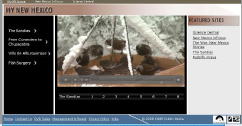 Don’t miss seeing this stunningly beautiful local PBS documentary about the Sandias that includes a segment on the rosy-finches, now archived on-line. Click on the thumbnail to the left for the KNME Film, The Sandias, to view the movie on knmetv.org/ The four chapters of this film document a project for a one-night spectacular light show, but also delve into the cultural, geologic and natural history of the mountain. Chapter One describes the ecology of the Sandias, and features the rosy-finch banding project near the end. There are great views of the birds taken at the Crest House, at the feeders and in the hand, not to mention wonderful photography that makes me really miss my former mountain home!
Don’t miss seeing this stunningly beautiful local PBS documentary about the Sandias that includes a segment on the rosy-finches, now archived on-line. Click on the thumbnail to the left for the KNME Film, The Sandias, to view the movie on knmetv.org/ The four chapters of this film document a project for a one-night spectacular light show, but also delve into the cultural, geologic and natural history of the mountain. Chapter One describes the ecology of the Sandias, and features the rosy-finch banding project near the end. There are great views of the birds taken at the Crest House, at the feeders and in the hand, not to mention wonderful photography that makes me really miss my former mountain home!Below is a view of the Paa-Ko Golf Course (about 7000 feet elevation, near the foot of the 13 mile road up to Sandia Crest, which is at 10,678 feet) on March 27, 2009. Click on the photo during daytime to see the current Web-cam view of this same scene.
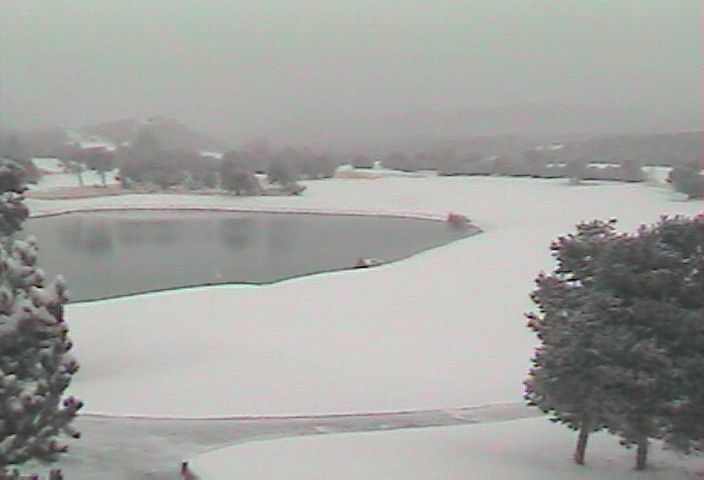
Posted by: Ken @ 1:58 pm
The boardwalk at Chapel Trail Nature Center: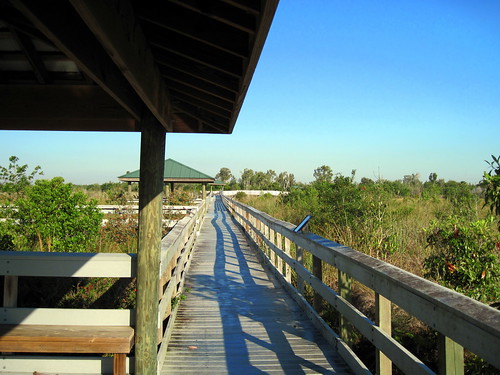
Nearly all our birding is done in “patches,” places that are within a five minute walk or drive from our home. In Florida, they include portions of the Broward County Water Conservation Area adjacent to our subdivision (which we call the West Miramar ESL, for “Environmentally Sensitive Area”), and two nearby parks managed by the City of Pembroke Pines: Chapel Trail Nature Center and West Pines Soccer Park and Nature Preserve. In Illinois, our favorites are Dick Young/Nelson Lake Kane County Forest Preserve, and Jones Meadow and Hawk’s Bluff Parks, managed by the Batavia Park District.
Of course, visiting these accessible habitats doesn’t waste driving time and money. The best times to be out birding are usually at the height of rush hour traffic delays. While this habit of staying close to home may be eco-friendly, we do not do this just to save the planet.
An uncommon migrant, this Solitary Sandpiper forages in a roadside ditch near our home. Its long wings, designed for long-distance migration, extend well past its short tail:
Visiting the same places day after day is not an efficient way to check off rarities, although a rare bird may show up just because you increased your odds of seeing it by being there so often. However, it does help put you in tune with the cycles of nature, as you see the subtle changes that may be missed by more casual visitors. As a kid in New Jersey during the 1940s, I remember the sound of the first Spring Peepers and the smell of Skunk Cabbage– and smelling the musk of hundreds of Garter Snakes as they emerged from hibernation, and the perfume of Citronella Ants as they swarmed in mid-summer. These ants tend aphids and “milk” them for the honeydew they produce. Thinking they must therefore be very sweet, my cousin and I tasted the ants and found them to be quite bitter! Back then, seeing the first robin was a great event, although now the species has extended its winter range northward and it is not unusual to see flocks all year.
A Northern Cardinal wants his picture taken– who can refuse?
Another advantage of making repeated visits to the same patch of wild land is that you learn to ignore so many “false alarms:” the broken branch that looks like a Great Horned Owl, the bear-shaped boulder, and the snake-like root that gave you a scare the first time you almost stepped on it– all may be conveniently ignored.
Something different — an American Bittern stands out among the familiar reeds at Chapel Trail Nature Center:
The bittern takes flight:
This morning, we watched the behavior of a Great Egret, a Wood Stork and a Double-crested Cormorant as the threesome fished together along the shore of our lake. The stork, which feeds by blind touch, benefited from fish that were driven near shore by the cormorant, and the egret shared the table and probably shooed some prey out to the cormorant:
When I was a kid, my bird books called them “Red-eyed Towhees,” but this Eastern Towhee at Chapel Trail has straw-colored eyes, characteristic of the race in Florida and southern Georgia:
I have also seen the northern red-eyed variety as a migrant in South Florida. Here is an example of one with intermediate eye color, in the West Miramar ESL:
For comparison, here is the northern red-eyed race I photographed in Illinois:
Only a few blocks from home, these Black Vultures assemble in dinner dress uniforms to feast on a road-killed Opossum: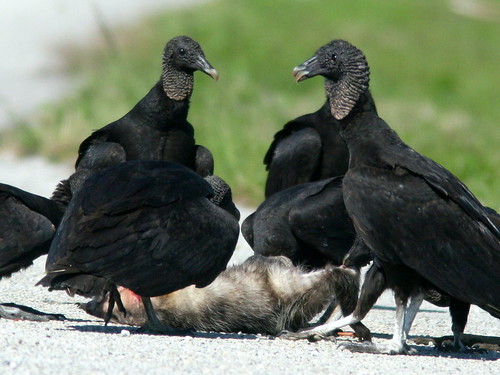
A Prairie Warbler brightens up the morning walk:
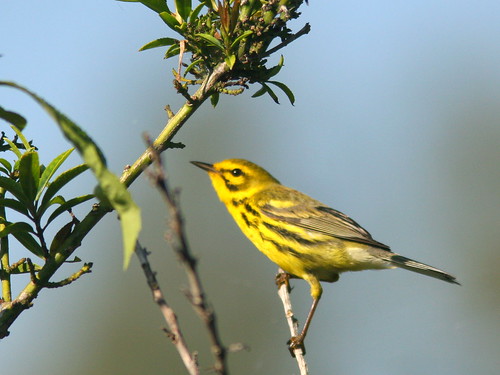
.
A male Common Yellowthroat is a difficult subject as it lurks in the shrubbery next to the boardwalk at Chapel Trail:
The yellowthroat’s somber mate perches in the reeds:
Back-lit by the morning sun, an Anhinga captures the rays to dry its feathers:
Like an emblem dominating a boulder at a lake in our local wetland, a cormorant does the same:
We notice that Blue Jays in South Florida commonly mimic the calls of Red-shouldered Hawks, a sound I never heard in New Jersey, when this Hawk was rarely seen (or heard) that far north.
A jay gathers nesting material in a neighbor’s palm tree:
This brace of Mottled Ducks provide a great photo-op by flying towards me. The female, in foreground, has an orange bill, while the male’s is more yellow:
Deer are not as common near our Florida home as they are up north, so seeing this half-grown Whitetail fawn is a treat:
A fresh Bobcat track reminds us of the wildness of this place, only a block from our home:
Posted by: Ken @ 10:03 pm
Thanks to Southwest Airlines, we left the snow and cold of northern Illinois, and the next morning Mary Lou and I took in a tranquil sunrise as we enjoyed coffee on the patio:
Although I miss the mountain vistas of our former home in New Mexico, life on a South Florida lake has some advantages. In addition to (usually) mild winters, there are quite a few interesting and beautiful birds that often share our yard.
In the evening, a Greater Yellowlegs shows up at the margin of the lake:
Nearby, a Killdeer loafs:
Always looking agitated and impatient, a Tricolored Heron fishes at the edge of our lawn: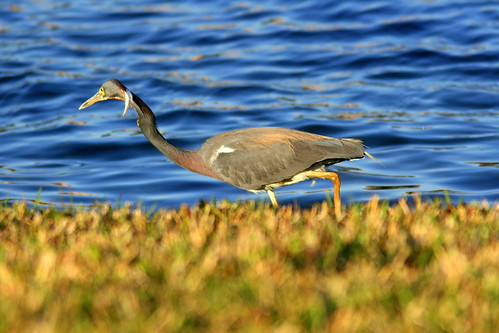
A Great Egret zeroes in on a little fish; less than one second after I took this photo, the fish was in the bird’s gullet (click on photo for a 5 frames per second sequence):
The first active Bald Eagle nest in Broward County since DDT was abolished in the 1970s is located near our home. While we were in Illinois, rosyfinch.com hosted a nationwide “Name the Eagle Triplets” poll on behalf of local Middle School science students. As a class project in learning to apply the Scientific Method, the seventh graders studied the relationship between the density of traffic on the nearby highway and the behavior of the eagles at the nest site. Nearly 300 votes were cast, from 34 states. For details see: http://rosyfinch.com/PollPage.html
On March 29, there were heavy thunderstorms and high winds, so I feared for the safety of the three Bald Eagle chicks in the nest. With other volunteer observers, I watched the nest for about a half hour, but could only see two eaglets. We were concerned that one might have fallen out of the nest during the storms.
Then, the female parent brought in a Cattle Egret, and the largest and most dominant eaglet appeared to eat it, undisturbed by the other large sibling, to the left in the following photo. Suddenly the smallest one’s head became just visible, to the right.
The second-hatched seemed to have grown more quickly than the first, so the middle one (in possession of the prey) may be “Chance,” with the eldest, “Lucky” to the left, and the youngest, “Courage” to the right:
The chicks, now 10 weeks old, had lunged at the prey as the parent delivered it, driving her off the nest immediately. She flew to a nearby snag to clean her bill and preen her ruffled feathers:
It was a real joy to get out early and walk our local birding patch, where this Little Blue Heron sent ripples across the still water of the lake: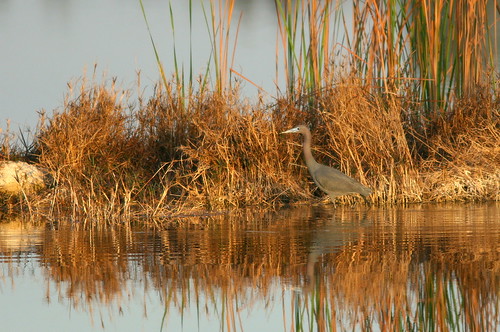
A male Red-winged Blackbird has staked out a nesting territory, and awaits the arrival of the several females whom he will entice to join his harem:
This (Western) Palm Warbler has changed into brighter breeding plumage, and will soon migrate north:
A female Mottled Duck, whose orange bill differs from the bright yellow one of her mate, is frozen in flight:
Glaring at me through the brown stalks of last year’s grasses, a Green Heron protests my intrusion:
A male Common Yellowthroat chides me (click on photo for additional views):
A male Northern Cardinal sings from the top of a small tree:
An owl-faced Northern Harrier flies low over the wetlands (click on photo for more views):













